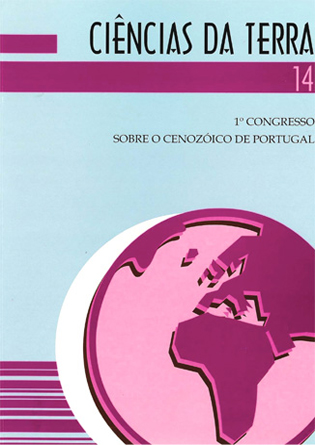Significado regional dos depósitos neogénicos continentais da área de Vila de Rei (Portugal Central)
Abstract
Key-words: conglomerates; basinal unconfonnities; gold exploitations; lithostratigraphic equivalence; LowerTagus Tertiary Basin. ln the Vila de Rei area (Central Portugal) the continental deposits of the Lower Tagus Tertiary 8asin lay upon the pediment of the Portuguese Central Chain. Three ronglomerate units are recorded from the base upwards separated by regional or basinal unconfonnities: Conglomerados de Rio de Moinhos (RM); Conglomerados de Serra de Almeirim (SA) and Conglomerados de Vila de Rei (VR). The first two units (RM and SA) have been sites of gold exploitation in huge open pit mines probably during Roman colonisation times. The contact of this units, on the Paleozoie basement or on the Paleogene unit Grés de Monsanto, is unconform, defining in both limits a large nondepositional and/or erosional hiatus. Those conglomerates seal the scdimentation of the Lower Tagus Tertiary Basin along irs northem border. Taking lnto account the significance assigned to their basinal unconfonnity limits, the uplift of the Portuguese Central Chain. and the fact of this continental units yielded no fossils with chronostratigraphic significanee, they have been considered ranging from Upper Miocene to the beginning of the Quatenary. Finally, a lithostratigraphic equivalence with the Neogenic units of thc Bierzo and Duerna basins (NW of the Iberian Peninsula), where exploitalions from Roman limes are also evident, is presented.Downloads
Published
2009-05-20
Issue
Section
Articles






